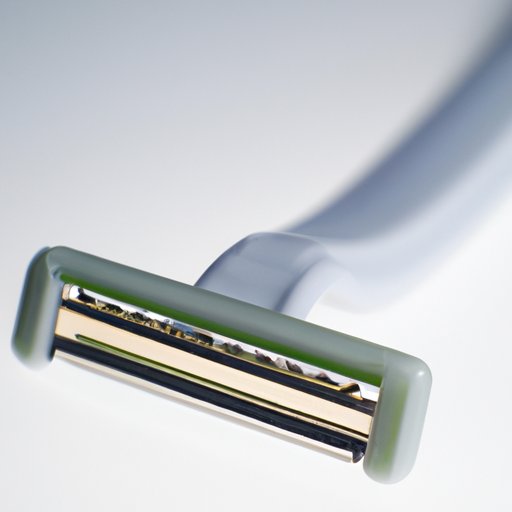
I. Introduction
Razor bumps are small, red bumps that appear on the skin after shaving. They are often itchy and painful, and can be a nuisance for those who shave regularly. Fortunately, there are ways to prevent razor bumps from forming, and to treat them if they do appear. In this article, we’ll discuss the causes of razor bumps and offer tips and techniques for preventing and treating them.
II. Cause and Prevention
Razor bumps are caused by hair follicles that become inflamed after shaving. This can happen when the hair is cut too short, and the sharp edge of the hair curls back and grows into the skin. Men with curly hair are more prone to razor bumps than those with straight hair, as are people with sensitive skin.
Here are some tips on how to prevent razor bumps from appearing:
- Prepare the skin before shaving by washing it with warm water and a gentle cleanser to remove any dirt and oil.
- Use a shaving cream or gel that contains moisturizers to help the razor glide smoothly over the skin.
- Shave in the direction of hair growth, rather than against it, to avoid cutting the hair too short.
- Use a sharp razor to minimize irritation to the skin.
III. Natural Remedies
If you do develop razor bumps, there are some natural remedies that may help to reduce inflammation and soothe the skin. Aloe vera gel, tea tree oil, and witch hazel are all known for their anti-inflammatory and antiseptic properties.
To use aloe vera gel, simply apply it to the affected area and let it sit for a few minutes before rinsing it off with cool water. Tea tree oil and witch hazel can be applied directly to the skin using a cotton ball or pad.
IV. Skin Care Routine
Incorporating shaving prevention into your daily skin care routine can also help to minimize the occurrence of razor bumps. This includes exfoliating the skin regularly to remove dead skin cells, staying hydrated by drinking plenty of water, and using a moisturizer to keep the skin healthy and hydrated.
V. Post-Shave Care
Post-shave care is also important for preventing razor bumps. After shaving, rinse the skin with cool water to soothe any irritation, and apply an aftershave balm to moisturize and soothe the skin. Some people also find it helpful to apply a cold compress or ice pack to the affected area to reduce inflammation and redness.
VI. Tools and Techniques
Using the right tools and techniques can also help to prevent razor bumps. Choose a razor with a single blade, as multiple blades can cut hairs too short and increase the likelihood of razor bumps. Shave gently and avoid pulling or tugging at the skin. Use a shaving cream or gel that’s designed for sensitive skin, as this can help to minimize irritation and inflammation.
VII. Prevention for Sensitive Skin
If you have sensitive skin, preventing razor bumps can be even more challenging. Look for shaving products that are designed for sensitive skin, and avoid using any products that contain alcohol, fragrances, or other harsh ingredients that can irritate the skin. Shave gently, using long, slow strokes to avoid irritating the skin.
VIII. Conclusion
Razor bumps can be a frustrating problem, but with the right tools and techniques, they can be prevented. By following the tips and advice in this article, you can enjoy smooth, healthy skin without the irritation and discomfort of razor bumps.




